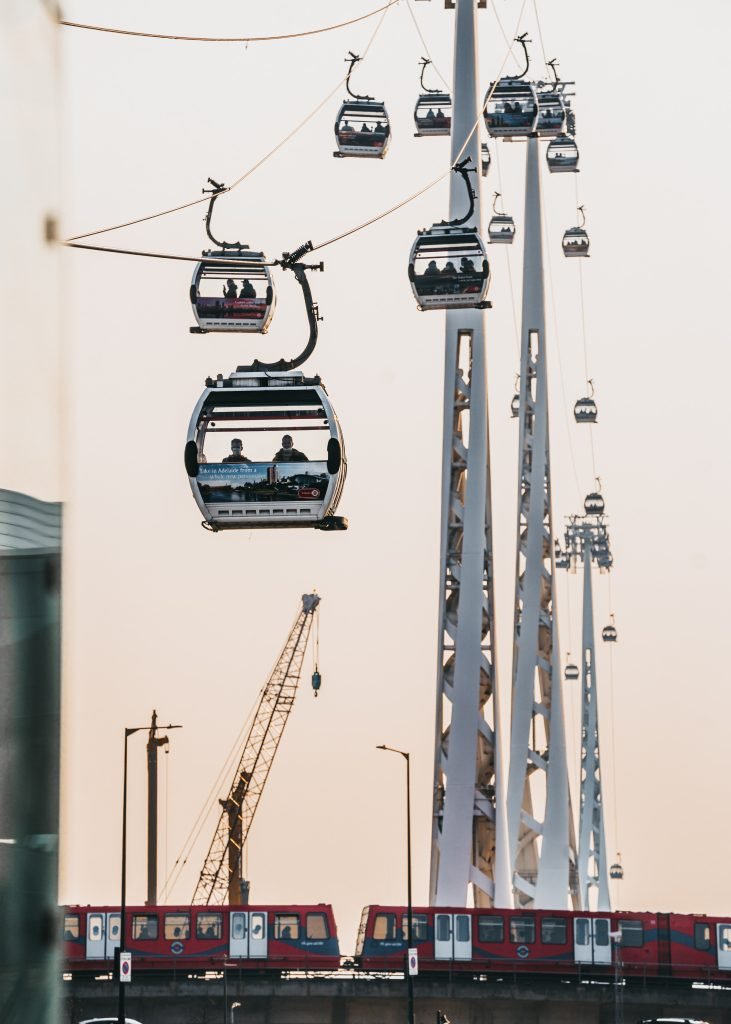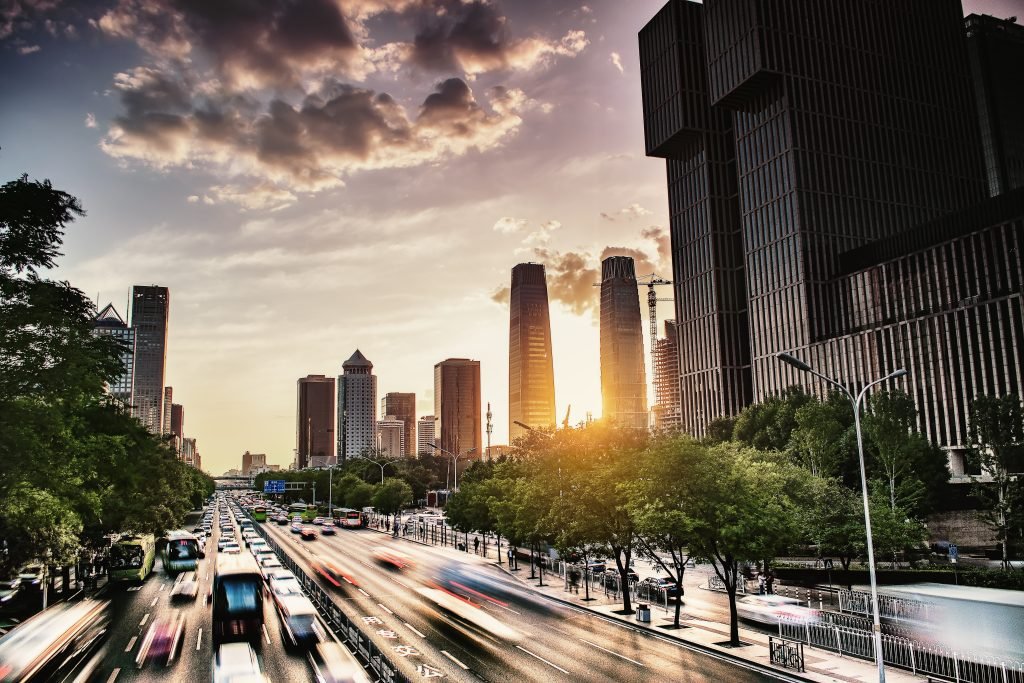Are you tired of the hustle and bustle of city life? Searching for a peaceful sanctuary amidst the skyscrapers and concrete jungle? Look no further than New York City’s green escapes. From enchanting urban gardens to sprawling botanical parks and breathtaking natural landscapes, the Big Apple offers a wealth of tranquil oases for both residents and visitors to enjoy. Embark on a journey through the green heart of the city and discover the hidden gems that provide a refreshing haven amidst the urban chaos.

Urban Gardens
New York City may be known for its towering skyscrapers and bustling streets, but amidst the concrete jungle, there are hidden oases of greenery and tranquility. Urban gardens are becoming increasingly popular in the Big Apple, providing a refreshing respite from the busy city life. These gardens not only beautify the city but also contribute to a sense of community and sustainability. Three types of urban gardens that have gained prominence in NYC are community gardens, rooftop gardens, and vertical gardens.
Community Gardens
Community gardens are a testament to the power of collaboration and shared responsibility. These gardens are typically maintained by local residents who come together to cultivate plants, flowers, and even vegetables. They provide a space where neighbors can connect with nature and each other. The history of community gardens in New York City dates back to the 1970s when vacant lots were transformed into green spaces by the community. These gardens offer a chance for urban dwellers to dig their hands in the soil and grow their own produce, fostering a sense of self-sufficiency and pride. Not only do these gardens bring people closer to nature, but they also promote sustainable practices such as composting and rainwater harvesting.
Rooftop Gardens
Rooftop gardens take gardening to new heights, quite literally. With limited horizontal space in the city, utilizing rooftops for gardening has become a creative solution to bring greenery into urban areas. The benefits of rooftop gardens are manifold. They provide insulation to buildings, reducing energy consumption and lowering carbon emissions. These gardens also act as natural filters, improving air quality and reducing the urban heat island effect. Notable rooftop gardens in NYC include The High Line, Brooklyn Grange, and the Rockefeller Center Roof Gardens. These spaces not only showcase the beauty of urban horticulture but also serve as gathering places for social events and educational initiatives.
Vertical Gardens
With space constraints in mind, vertical gardens have emerged as an innovative way to maximize greenery in urban environments. These gardens utilize vertical surfaces such as walls and fences to grow plants, creating a lush and vibrant tapestry of vegetation. One of the most famous examples of vertical gardens in NYC can be found in the Highline Park. These gardens not only add an aesthetic dimension to the cityscape but also improve air quality by absorbing pollutants. Additionally, vertical gardens enhance the biodiversity of urban areas by providing habitat for birds, butterflies, and other small creatures. The artistic aspects of vertical gardens cannot be overlooked either, as they can transform dull, gray walls into works of living art.
Botanical Parks
If urban gardens aren’t enough to satisfy your craving for nature, New York City is home to some spectacular botanical parks. These parks go beyond simple green spaces and offer a curated experience for those seeking tranquility and natural beauty. Three botanical parks that stand out in NYC are Central Park, Brooklyn Botanic Garden, and New York Botanical Garden.
Central Park
Central Park is an iconic oasis in the heart of Manhattan, providing a sanctuary away from the city’s hustle and bustle. Designed by Frederick Law Olmsted and Calvert Vaux, this sprawling park spans over 843 acres and features a variety of landscapes, including meadows, woods, and lakes. Its origins can be traced back to the mid-19th century when the park was envisioned as a space for all New Yorkers to enjoy nature. Key features and attractions in Central Park include the picturesque Bethesda Terrace, the tranquil Conservatory Garden, and the iconic Bow Bridge. The park also hosts various events and activities throughout the year, from outdoor concerts to ice skating in the winter, ensuring there’s always something for everyone to enjoy.
Brooklyn Botanic Garden
Nestled in the borough of Brooklyn, the Brooklyn Botanic Garden is a horticultural haven that delights visitors with its diverse collection of flora. Spanning 52 acres, this oasis is a testament to the city’s commitment to preserving nature. The garden showcases a wide variety of plants, including roses, cherry blossoms, and native New York wildflowers. The stunning Japanese Hill-and-Pond Garden is a must-see, providing a serene escape from the urban environment. The Brooklyn Botanic Garden also offers educational programs and workshops to inspire future generations of plant enthusiasts.
New York Botanical Garden
The New York Botanical Garden, located in Bronx, is another gem that city dwellers should not miss. Spanning a staggering 250 acres, this botanical garden is a living museum of plants with a mission to conserve and educate. The garden features numerous themed gardens, including the iconic Peggy Rockefeller Rose Garden and the vibrant Perennial Garden. The Enid A. Haupt Conservatory is a showstopper, housing a vast collection of tropical and desert plants. Visitors can also explore the garden’s historic buildings, such as the Victorian-era Stone Mill. The New York Botanical Garden not only offers a serene escape but also hosts various exhibitions, concerts, and food festivals throughout the year.

Natural Landscapes
For those seeking a more untouched and wild experience, New York City also boasts natural landscapes that transport visitors far away from the urban jungle. These landscapes offer a glimpse into the city’s natural heritage and provide opportunities for outdoor recreation and exploration. Three natural landscapes worth exploring in NYC are Prospect Park, Jamaica Bay Wildlife Refuge, and Inwood Hill Park.
Prospect Park
Located in Brooklyn, Prospect Park is a haven of tranquility and natural beauty. Designed by the same visionaries behind Central Park, this expansive green space encompasses 526 acres and features rolling hills, woodlands, and a stunning lake. The park offers a wide range of recreational activities, including walking and biking trails, picnicking areas, and even a zoo. Prospect Park is also renowned for its cultural offerings, hosting concerts, Shakespearean performances, and art exhibitions throughout the year. Whether you’re in the mood for a leisurely stroll or an active day out, Prospect Park has something for everyone.
Jamaica Bay Wildlife Refuge
Situated in the boroughs of Brooklyn and Queens, the Jamaica Bay Wildlife Refuge is a hidden gem for nature enthusiasts. Spanning over 9,000 acres, this refuge provides a critical habitat for diverse bird species and other wildlife. Visitors can explore the refuge’s trails and observation decks to catch a glimpse of migratory birds, waterfowl, and even nesting ospreys. The refuge also offers educational programs and guided tours, allowing visitors to learn about the importance of wetland ecosystems and conservation efforts. If you’re looking to immerse yourself in nature within the city limits, the Jamaica Bay Wildlife Refuge is a must-visit destination.
Inwood Hill Park
Located at the northernmost tip of Manhattan, Inwood Hill Park offers a unique landscape that transports visitors back in time. This park is known for its unique geological features, including rocky outcroppings and glacial formations. As one of the last remaining natural forests in the city, Inwood Hill Park is a haven for biodiversity. Visitors can explore its trails and discover hidden gems such as the Shorakkopoch Rock and the Indian Caves. Inwood Hill Park is not just a natural escape but also holds cultural significance, as it was once inhabited by the Lenape Native Americans. Exploring this park allows you to reconnect with nature and delve into the rich history of New York City.
In conclusion, New York City may be synonymous with skyscrapers and bustling streets, but it is also home to an abundance of green escapes. Urban gardens, botanical parks, and natural landscapes offer a refuge for both residents and visitors alike. Whether it’s cultivating plants in a community garden, exploring the diverse flora of a botanical park, or immersing oneself in the untouched beauty of a natural landscape, these green spaces provide a sense of tranquility and connection to nature. So, next time you find yourself in the concrete jungle, don’t forget to take a detour into one of these green escapes and experience the natural wonders of New York City.

